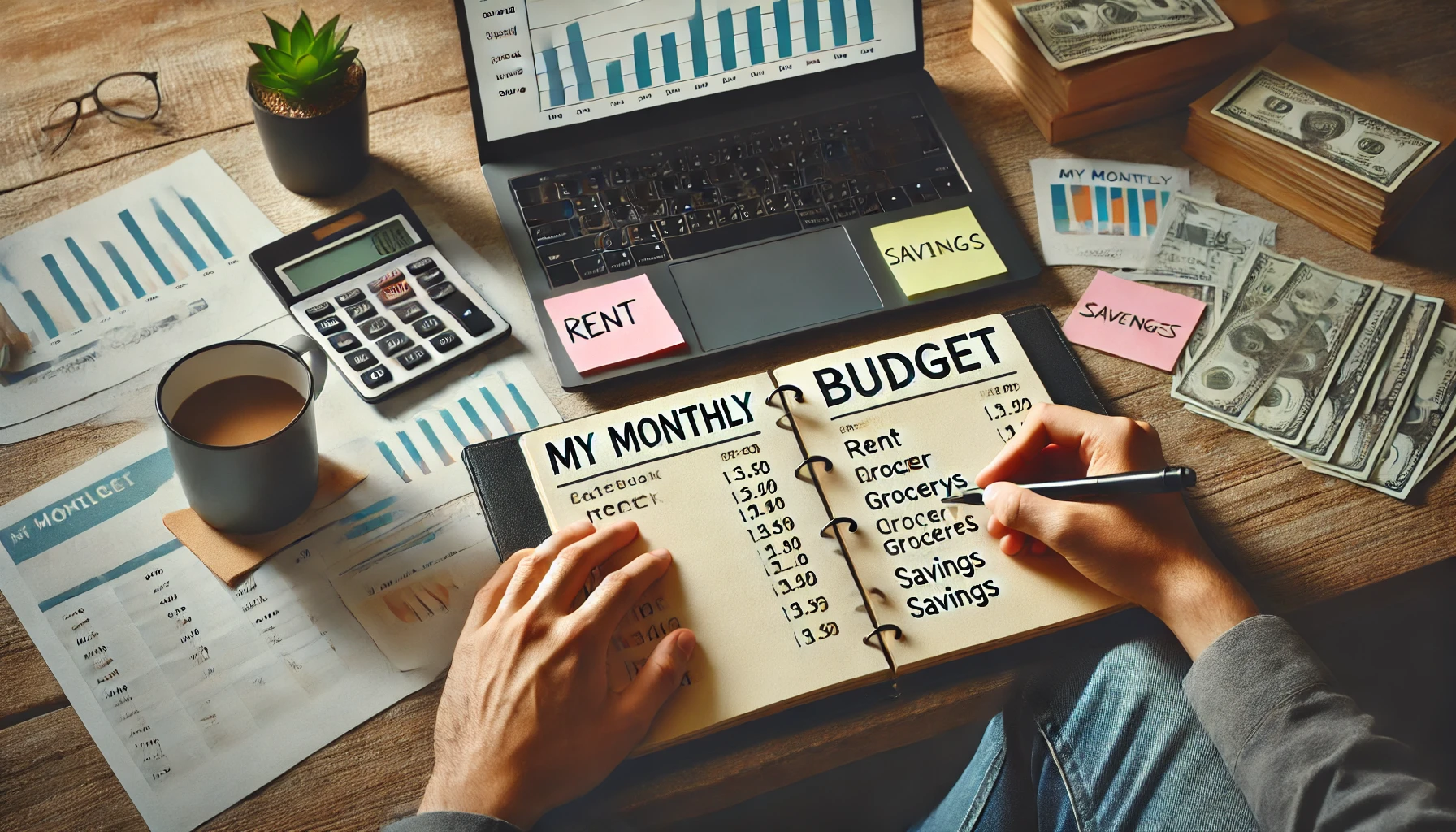A monthly budget isn’t about restriction—it’s about control and clarity. It helps you know exactly where your money is going and ensures that your spending aligns with your goals. The good news? You don’t need to be an expert or use complicated spreadsheets. In this article, we’ll walk you through how to create a simple, effective budget that fits your real life.
Why You Need a Budget (Even If You Think You Don’t)
A budget gives you a clear picture of:
- How much you earn
- Where your money is going
- What you can afford
- How to hit your savings goals
Even if your income is low or irregular, budgeting can bring peace of mind and prevent financial surprises.
Step 1: Know Your Monthly Income
Start by calculating your total net income—what you actually take home after taxes and deductions.
Include:
- Salary or hourly wages
- Freelance or side gig income
- Government support or benefits
- Any regular financial help (e.g., child support)
Tip: If your income varies, use the average of the last 3 months.
Step 2: List Your Monthly Expenses
Break down all your regular and expected expenses.
Fixed Expenses (same every month):
- Rent or mortgage
- Utilities
- Phone/internet
- Insurance
- Loan payments
Variable Expenses (may change monthly):
- Groceries
- Transportation
- Eating out
- Entertainment
- Personal care
Occasional Expenses (plan ahead!):
- Gifts
- Car maintenance
- Medical bills
- Subscriptions (annual renewals)
Step 3: Choose a Budgeting Method
There are several methods to organize your budget. Choose one that feels natural and sustainable for your lifestyle.
Popular Methods:
🧮 50/30/20 Rule:
- 50% Needs (rent, bills, groceries)
- 30% Wants (eating out, hobbies)
- 20% Savings and debt repayment
🟰 Zero-Based Budget:
- Every dollar is assigned a job
- Income minus expenses = $0
- Great for detail-oriented people
💌 Envelope Method (or Digital Version):
- Allocate specific amounts to categories
- Spend only what’s in each envelope
- Helps with impulse control
Step 4: Set Spending Limits for Each Category
Once you choose your method, assign spending limits based on your income and priorities.
Example:
- Rent: $800
- Groceries: $300
- Transport: $100
- Subscriptions: $30
- Fun: $100
- Savings: $200
- Emergency fund: $50
Make sure the total doesn’t exceed your income.
Step 5: Track Your Spending in Real Time
This is the secret sauce. A budget only works if you use it. Track every expense to stay accountable.
Tools:
- Apps like YNAB, Mint, or EveryDollar
- Google Sheets or Excel
- A pen-and-paper budget journal
Update your budget weekly to stay on top of it.
Step 6: Adjust as Needed
Life changes—and so should your budget. If you overspend in one area, cut from another. If your income increases, update your savings goals.
Monthly Check-In:
- Did I stick to my limits?
- What worked, and what didn’t?
- Do I need to shift priorities next month?
A budget is flexible. The goal is progress, not perfection.
Step 7: Add a Category for “Fun Money”
Don’t forget to live a little! Including fun in your budget prevents burnout and helps you stick to the plan.
Examples:
- $50 for takeout
- $30 for hobbies or games
- $20 for random treats
When it’s planned, you can enjoy it guilt-free.
Step 8: Use Automation to Make Budgeting Easier
Simplify your system with automation where possible.
Automate:
- Bill payments
- Transfers to savings accounts
- Debt payments
- Budget reminders on your calendar
This reduces mental effort and makes good habits effortless.
Step 9: Celebrate Small Wins
Budgeting isn’t about punishment—it’s about empowerment.
- Stuck to your budget for a week? Great!
- Saved $100 this month? Amazing!
- Paid off a credit card? Celebrate!
Each win motivates you to keep going.
Final Thoughts: A Budget That Works = A Life with Less Stress
Creating a budget doesn’t mean you’re broke—it means you’re smart. It gives you the freedom to spend without fear and helps you take control of your financial future.
Start simple. Adjust often. Stick with it.
Your first budget doesn’t have to be perfect—it just has to be yours.
